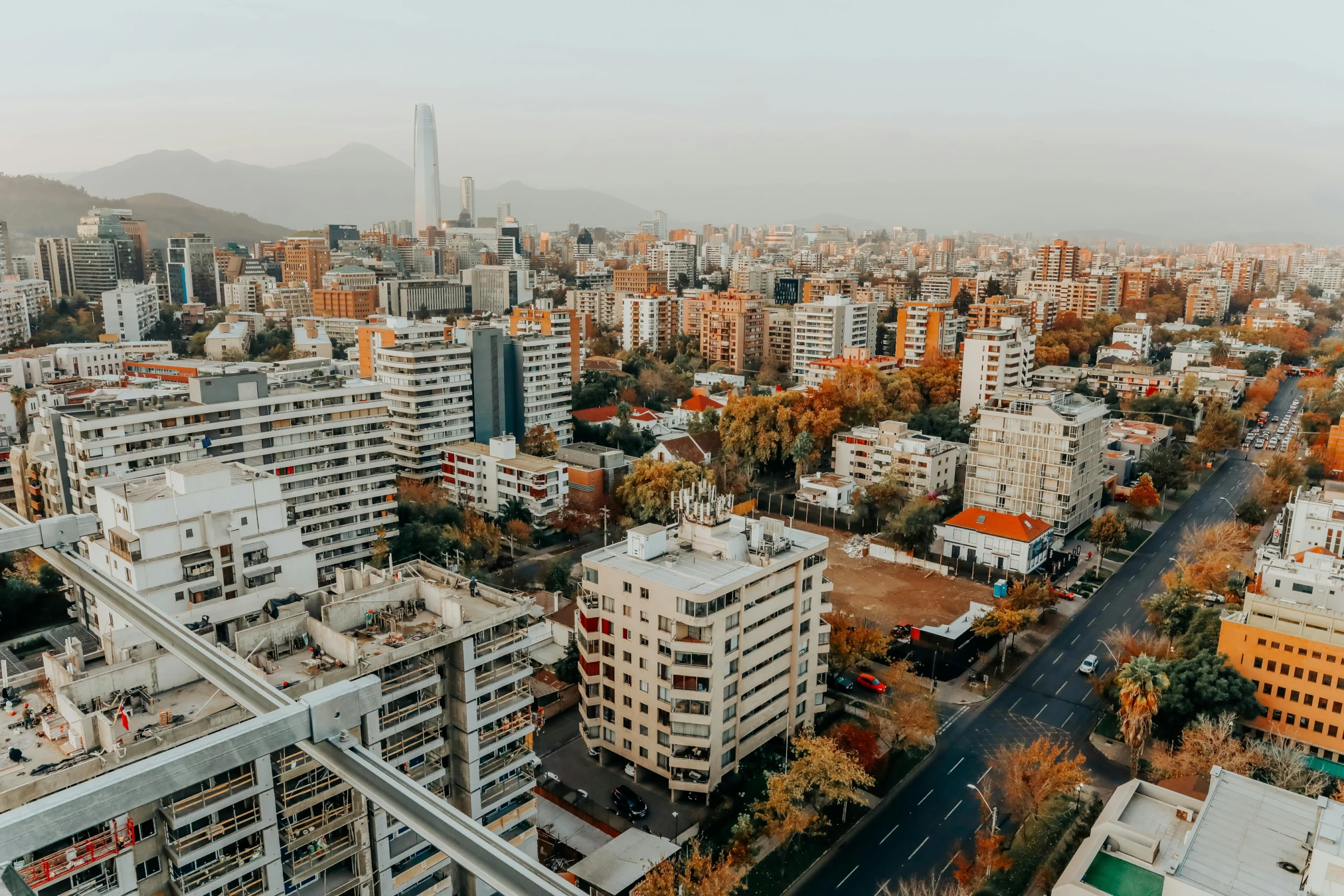South Korea’s robust economy and dynamic business environment attract numerous foreign investors and companies. However, navigating the employment law landscape is crucial for any business seeking to operate successfully in this market. This guide aims to shed light on the fundamental aspects of South Korean employment law, ensuring that your business remains compliant while fostering a positive and productive work environment.
Types of Workers in South Korea
From an HR perspective, South Korea typically categorizes workers into two main types: “regular workers” and “non-regular workers.” Understanding the distinction between these two categories is crucial for human resource management in South Korea, as they have different legal rights and implications for employers. Here’s an overview of each:
1. Regular Workers (Jeonggyujik)
Regular workers, often referred to as “permanent employees” or “full-time employees,” are those who are hired on an indefinite-term basis. Key characteristics include:
- Contract Duration: They are employed under open-ended contracts without a specified termination date.
- Working Hours: Typically work standard full-time hours, which in South Korea generally means 40 hours per week.
- Benefits and Protections: Regular workers enjoy comprehensive employment benefits, including health insurance, pension, severance pay, and paid leave. They are also protected by robust labor laws that make it difficult for employers to terminate their employment without just cause.
- Job Security: They generally have higher job security compared to non-regular workers.
- Career Advancement: Regular workers often have clearer career progression paths within the organization.
2. Non-Regular Workers (Bijeonggyujik)
Non-regular workers include a range of employment types such as fixed-term, part-time, temporary, and dispatched workers. Their characteristics are:
- Contract Duration: They are employed on a temporary basis, under contracts with fixed terms or for specific projects.
- Working Hours: This can vary widely. Part-time workers, for example, work fewer hours than the standard full-time, while temporary workers might work full-time hours but only for a specific period.
- Benefits and Protections: Non-regular workers often receive fewer benefits compared to regular workers. Their contracts may not include provisions for severance pay, pension, or comprehensive health insurance.
- Job Security: These workers typically have less job security, as their contracts can be non-renewed without extensive legal justification.
- Flexibility: Non-regular employment offers flexibility for both employers and employees, which can be beneficial for certain types of work or life circumstances.

Understanding the Employment Contract
In South Korea, employment contracts are governed by a comprehensive set of labor laws designed to protect the rights of workers while providing clear guidelines for employers. Understanding these laws is essential for crafting compliant and effective employment contracts. Here’s an overview with a focus on South Korea-specific labor laws:
Key South Korean Labor Laws Influencing Employment Contracts
- Labor Standards Act: This is the cornerstone of labor laws in South Korea, setting the minimum standards for working conditions. It covers various aspects including working hours, wages, leave, and termination.
- Equal Employment Opportunity and Work-Family Balance Assistance Act: Addresses workplace discrimination and promotes equality. It also includes provisions for parental leave and work-life balance.
- Minimum Wage Act: Sets the annual minimum wage, which is a critical factor in determining salary packages.
- Occupational Safety and Health Act: Establishes standards for ensuring a safe and healthy working environment.
Components of Employment Contracts in South Korea
- Contract Type: Clearly state whether the position is full-time, part-time, or contract-based. South Korea also recognizes “non-regular” workers (temporary or contract-based), who have different rights compared to regular (permanent) employees.
- Job Description and Duties: Provide a detailed role description and list of responsibilities, ensuring clarity and understanding.
- Duration of Employment: Specify if it’s a fixed-term or indefinite contract. Note that for fixed-term contracts, the Labor Standards Act limits the duration to a maximum of two years.
- Working Hours: Standard working hours should not exceed 40 hours per week, with a maximum of 12 hours of overtime, as per the Labor Standards Act.
- Wages: Clearly outline the salary, bonus structure, and any other forms of compensation. All wages must comply with the Minimum Wage Act.
- Leave Policies: Detail policies on annual leave, sick leave, and public holidays. The Labor Standards Act provides minimum standards for leave entitlements.
- Termination and Severance: Conditions for termination must comply with the Labor Standards Act, which requires just cause for dismissal. Severance pay is typically required for employees who have worked for a continuous period of one year or more.
- Non-Compete and Confidentiality Clauses: These should be carefully constructed to be reasonable and enforceable.
- Dispute Resolution: Include processes for handling disputes arising from employment.
Best Practices in Drafting Employment Contracts
- Compliance: Ensure all terms are compliant with the relevant South Korean labor laws.
- Clarity: Use clear, concise language to avoid misunderstandings.
- Bilingual Contracts: Providing a Korean version of the contract is essential, and an English translation is highly recommended for foreign employees.
- Regular Reviews: Keep contracts updated with the latest legal changes.
Legal Review and Cultural Considerations
- Legal Expert Review: Have employment contracts reviewed by a legal expert in South Korean labor law.
- Cultural Sensitivity: Be mindful of cultural norms and practices, which can impact employee expectations and workplace dynamics.
Employment contracts in South Korea must be carefully drafted to align with the specific labor laws while addressing the standard contractual elements. Regular updates and legal reviews are crucial to ensure ongoing compliance and effectiveness. Understanding and respecting these laws not only ensures legal compliance but also helps in building a respectful and productive work environment.
Annual Leave and Holidays
Annual leave and public holidays are important aspects of employment in South Korea, governed by the country’s labor laws. Here’s an overview:
- Eligibility: Employees who have worked for more than 80% of a full year are entitled to annual paid leave.
- Leave Entitlement: The initial entitlement is 15 days of paid leave for employees who have worked for a year. Additional one day of leave is added for every two years of service beyond the first year, up to a maximum of 25 days.
- Unused Leave: Unused leave can be carried over to the next year but must be used within the first three months of the new year.
Public Holidays in South Korea
South Korea has several public holidays, and they are generally paid days off for workers. Here is a list of the public holidays:
- New Year’s Day (January 1)
- Seollal (Lunar New Year’s Day) – Usually a three-day holiday including the day before and after Seollal. The date varies each year as it’s based on the lunar calendar.
- Independence Movement Day (March 1)
- Labor Day (May 1) – Not a mandatory public holiday but widely observed.
- Children’s Day (May 5)
- Buddha’s Birthday – Falls on the 8th day of the 4th month of the lunar calendar.
- Memorial Day (June 6)
- Liberation Day (August 15)
- Chuseok (Korean Thanksgiving Day) – A three-day holiday including the day before and after Chuseok. Like Seollal, the date varies based on the lunar calendar.
- National Foundation Day (October 3)
- Hangeul Day (October 9)
- Christmas Day (December 25)
Special Considerations
- Substitution Holidays: If a public holiday falls on a weekend, a substitute holiday may be provided, usually the following Monday.
- Cultural Significance: Holidays like Seollal and Chuseok are significant in Korean culture, often involving family gatherings and traditional celebrations.
Impact on Business Operations
- Planning: Businesses should plan for potential closures or reduced staffing during these holidays, especially Seollal and Chuseok, which are major holiday periods.
- International Coordination: Companies with international operations should be aware of these holidays for scheduling and communication purposes.
In summary, annual leave and public holidays are an integral part of employment in South Korea, reflecting both legal entitlements and cultural practices. HR professionals and business managers need to be mindful of these dates and regulations to ensure compliance and respect for local customs.
The first platform dedicated to streamlining Malaysia entity setup and management.
Termination and Severance Pay
In South Korea, the termination of employment and severance pay are governed by strict labor laws designed to protect workers. Understanding these laws is crucial for any employer operating in the country. Here’s an overview:
Termination of Employment
- Grounds for Termination:
- The Labor Standards Act in South Korea requires an employer to have just cause for terminating an employee. This means termination can only occur under reasonable and fair circumstances, such as misconduct, incompetence, or operational requirements (like redundancy). To read more about the Labor Standards Act in South Korea, click here.
- Dismissal without just cause can be challenged by the employee, leading to potential legal disputes and reinstatement orders.
- Notice Period:
- Employers must provide a minimum notice of 30 days before termination or pay the employee one month’s wages in lieu of notice.
- For dismissals due to urgent managerial reasons (like financial difficulties), this notice period may be waived, but the employer must still provide evidence of the urgency.
- Process and Documentation:
- It’s advisable to document any performance or conduct issues leading to termination.
- Employers should follow a fair and transparent process, including conducting a disciplinary meeting with the employee before making the final decision to terminate.
Severance Pay
- Eligibility:
- Employees who have worked for at least one year are entitled to severance pay upon leaving the company, regardless of the reason for departure (including voluntary resignation).
- This applies to both full-time and part-time employees.
- Calculation of Severance Pay:
- The standard calculation for severance pay is the equivalent of one month’s average wages for each year of service.
- The average wage is calculated based on the employee’s wages over the last three months.
- Limitations:
- There’s a cap on the amount of monthly wages that can be considered for calculating severance pay, which is periodically adjusted.
- Retirement Pension System Alternative:
- Some companies may opt for a retirement pension system instead of traditional severance pay. In this system, contributions are made to a pension fund during the employee’s tenure.
- The choice between a severance payment system and a retirement pension system should be made clear in the employment contract.
Legal Disputes and Remedies
- Dispute Resolution: Employees can file a complaint with the Labor Commission if they believe their termination was unjust.
- Reinstatement and Compensation: If the termination is found to be unjust, the employee may be entitled to reinstatement or compensation.
Best Practices for Employers
- Legal Compliance: Ensure all terminations are conducted in accordance with South Korean labor laws.
- Documentation: Keep thorough records of all employment-related matters, including performance evaluations and disciplinary actions.
- Communication: Handle the termination process with clear communication and sensitivity.
Termination and severance in South Korea are areas where compliance with labor law is particularly crucial. Employers must have justifiable grounds for termination, provide adequate notice or compensation, and calculate severance pay according to legal guidelines. Understanding and adhering to these rules is essential for fair and lawful employment practices in South Korea.
Anti-Discrimination Laws
Anti-discrimination laws are a critical aspect of employment legislation in South Korea, designed to promote fairness and equality in the workplace. Here’s an overview of how these laws protect workers:
Key Anti-Discrimination Laws in South Korea
- The Labor Standards Act:
- This foundational piece of legislation provides general protections against unfair labor practices, including discriminatory actions based on gender, religion, or social status.
- The Equal Employment Opportunity and Work-Family Balance Assistance Act:
- Specifically addresses gender discrimination in the workplace.
- Mandates equal treatment and opportunities for men and women in hiring, promotion, training, and other employment conditions.
- Includes provisions against sexual harassment.
- The Employment and Labor Relations Act:
- Prohibits discrimination in employment based on nationality, religion, social status, physical condition, political opinion, or marital status.
- Disability Discrimination Act:
- Protects individuals with disabilities from discrimination in employment.
- Employers are required to provide reasonable accommodations for employees with disabilities.
- Age Discrimination Prohibition in Employment and Elderly Employment Promotion Act:
- Enacted to prevent age discrimination in hiring and employment practices.
- Encourages the employment of older workers.
Protections and Enforcement
- Equal Treatment: Employers are required to treat all employees equally in terms of salary, work assignments, promotion, and training opportunities.
- Harassment and Bullying: These laws also cover harassment and bullying in the workplace, with specific attention to sexual harassment.
- Complaints and Investigations: Employees who face discrimination can file complaints with the Ministry of Employment and Labor. The Ministry can conduct investigations and take corrective actions.
- Legal Remedies: Employees subjected to discrimination may seek legal remedies, including filing a lawsuit for damages.
Employer Responsibilities
- Policy Implementation: Employers are advised to implement clear anti-discrimination policies and provide training to their employees.
- Preventive Measures: Proactive measures, such as regular training and awareness programs, are essential to prevent discrimination and harassment.
- Complaint Mechanism: Establishing a transparent and confidential process for handling complaints of discrimination and harassment.
Challenges and Cultural Considerations
- Despite these laws, challenges in enforcement and cultural barriers still exist.
- Cultural attitudes and norms can sometimes influence workplace dynamics, making it crucial for multinational companies and expatriates to understand these nuances.
Anti-discrimination laws in South Korea aim to create an equitable and respectful work environment. For employers, compliance with these laws is not just about legal adherence but also about fostering a positive and inclusive company culture. Understanding and actively implementing these laws help in building a diverse and harmonious workplace.
Ensuring Compliance with Labor Laws
It’s crucial for businesses operating in South Korea to:
- Keep abreast of changes in labor laws and regulations.
- Ensure all employment practices, from hiring to termination, comply with these laws.
- Consider consulting with legal experts specializing in South Korean employment law for complex issues.
Conclusion
Understanding and adhering to employment law in South Korea is vital for the smooth operation of your business. It helps in fostering a positive work culture, enhances employee relations, and safeguards your company against legal issues. As South Korea continues to be a hub for global business, staying informed and compliant with its employment laws is more important than ever for success in this market.
How can GEOS help?
Unlock global expansion with our expertise and global platform—operated by seasoned professionals with firsthand experience in over 150 countries. From entity setup to ongoing maintenance, our all-in-one platform and consultative approach ensure efficient, compliant, and tailored solutions for your business’s journey to international expansion.
Schedule a consultation with us here.
Seeking expert assistance with end to end entity setup execution? Explore our managed entity setup services.




